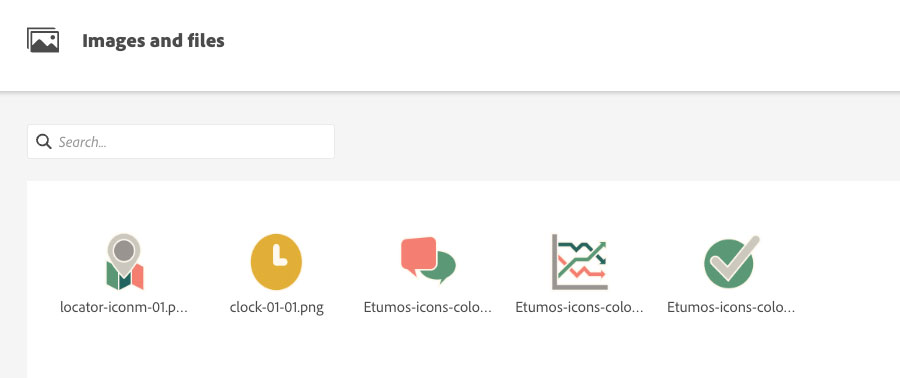Brand Consistency and Marketo
Brand consistency is vital to providing a great customer experience and achieving business goals. When leveraged in Adobe Marketo Engage, brand guidelines help Marketing Operations teams accomplish brand consistency in campaign production and automated workflows. These brand guidelines get translated into templates. These templates provide consistency across the brand, regardless of which marketers are driving the campaigns.
What Exactly Is Brand Consistency?
Branding is something you’re already aware of. Brand Consistency refers to the variation from on-brand creative, aesthetics, writing tone, and all of the ineffable inputs that give your brand its unique smell. Work through establishing brand guidelines, then go the final step into implementing the practical real-world marketing templates that communicate your brand consistently.
Because building your brand and creating brand authority is essential, developing consistent and automated processes is vital to maintaining your brand consistency across the whole company through Marketo.
Turn Brand Guidelines into Email Templates, Marketing Templates, and More
Recognition is one of the primary benefits of having brand consistency. When people are familiar with your particular look, tone, and messaging, they’ll more likely have you top of mind. Templatized graphics, for example, aren’t redundant or boring; they stand out.
People will be able to notice your brand in the sea of messages they see every day and assign more legitimacy to the company – for example, not suspecting a legitimate email is a spoof because of deviations from the brand’s norm. They’ll develop an affinity for your brand and be more inclined to remain loyal based on the reliable customer experience. Thus campaign performance is boosted by this robust and coherent brand image.
This brand consistency effort will save the internal team time. Some people think they want complete freedom to create brand assets from scratch, but this approach is inefficient. Reduce the impact of the “paradox of choice” by providing a framework that makes it easier to create assets based on a templatized approach quickly.
Brand Identity at a glance and up-close through Marketo
Can you imagine a brand without a name or a logo? That’d be difficult – you probably wouldn’t remember it in that case. A brand might be developed before the product/service is fully defined. Brand consistency should be applied across all ways a person would encounter the brand – website, emails, advertisements, SMS, tradeshow booths, customer service interactions, and much more.
That isn’t to say that brands can’t or shouldn’t modify themselves lest they jeopardize consistency. Organizations regularly refine their brand in response to cultural changes, new target markets, and more. Employees should reassess their brand usage when there are refinements or modifications to the brand guidelines and adapt accordingly.
Once you have landing page templates, email templates, and copy guidelines in place, you have less to worry about your distributed marketers going rogue. At a glance, your brand will be obvious, providing that microsecond of subconscious recognition, and the brain pathways are electrified again.
When people look deep into the assets, they’ll get an up-close look at your brand identity living on through individual communications. Don’t worry; if you’ve done the work to translate your Brand Guidelines into the practical marketing tools, prospects will only gain a deeper appreciation for your brand identity.
Marketing Operations has a unique opportunity to implement and enforce brand experience consistency in a technical way. Setting up a new marketing automation platform such as Marketo Engage is an ideal time to verify and clarify brand guidelines to ensure they are put into play from the beginning.
Marketo Engage’s Brand-Forward Features
Marketo Engage provides several opportunities and features to support brand consistency.
It can develop email and landing page templates with brand logos, taglines, and colors. Template variables and snippets extend the templates to provide constraints – or perhaps “bumpers” is a better term – giving users a degree of flexibility within an agreeable range. Snippets can be used for headers and footers with key branding elements built-in; if modifications are required, all assets using the snippet will be updated immediately.
Brand-compliant assets can be imported into the Marketo Engage Design Studio for use within emails and landing pages and replaced with new versions. Businesses that also have Adobe Experience Manager Assets can use the integration to allow users to directly pull into Design Studio images stored in the digital asset management system.

As the brand may have nuances concerning specific products, services, and markets, audience targeting via engagement program streams and a ‘traffic director’ directing people to the right one allows the brand experience to be tailored for each group while providing a consistent content experience for each group each individual.
Adjacent to the technical components is the campaign production framework – the work process that team members follow. This could include a brand checklist and appropriate built-in review stages to help reinforce the components of the brand guidelines and ensure the campaign will provide a great brand experience. Once the Marketo Engage-Workfront integration is released, end-to-end automated workflows will be possible.
Translate Employee Communications into Brand-Approved Language
The design director and the creative team develop and maintain brand guidelines, so they certainly play the primary role in brand consistency. But ultimately, those brand guidelines won’t do much unless implemented.
Creative team members such as graphic designers, production artists, and writers generate hundreds or thousands of assets that meet brand guidelines. Marketing campaign managers use these assets in countless campaigns and applications. Marketing Operations specifically implement assets and guidelines in systems and standard operating procedures. Working together, each of these individuals contributes toward brand consistency. All of this process engineering helps translate your employee communications into brand-consistent messaging, so you don’t have to worry about every single communication.
Brand Consistency is drive at scale by Marketing Technologies and processes
Brand consistency is one of an organization’s most valuable assets. By applying brand guidelines to Marketo Engage, Marketing Operations teams can help companies reap the benefits of excellent brand experience and drive loyal customers.







